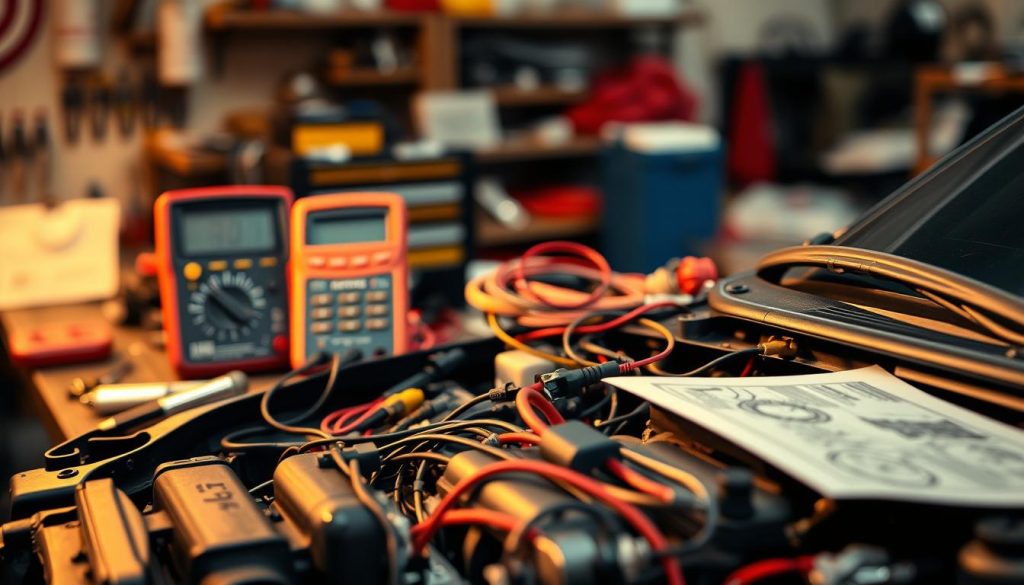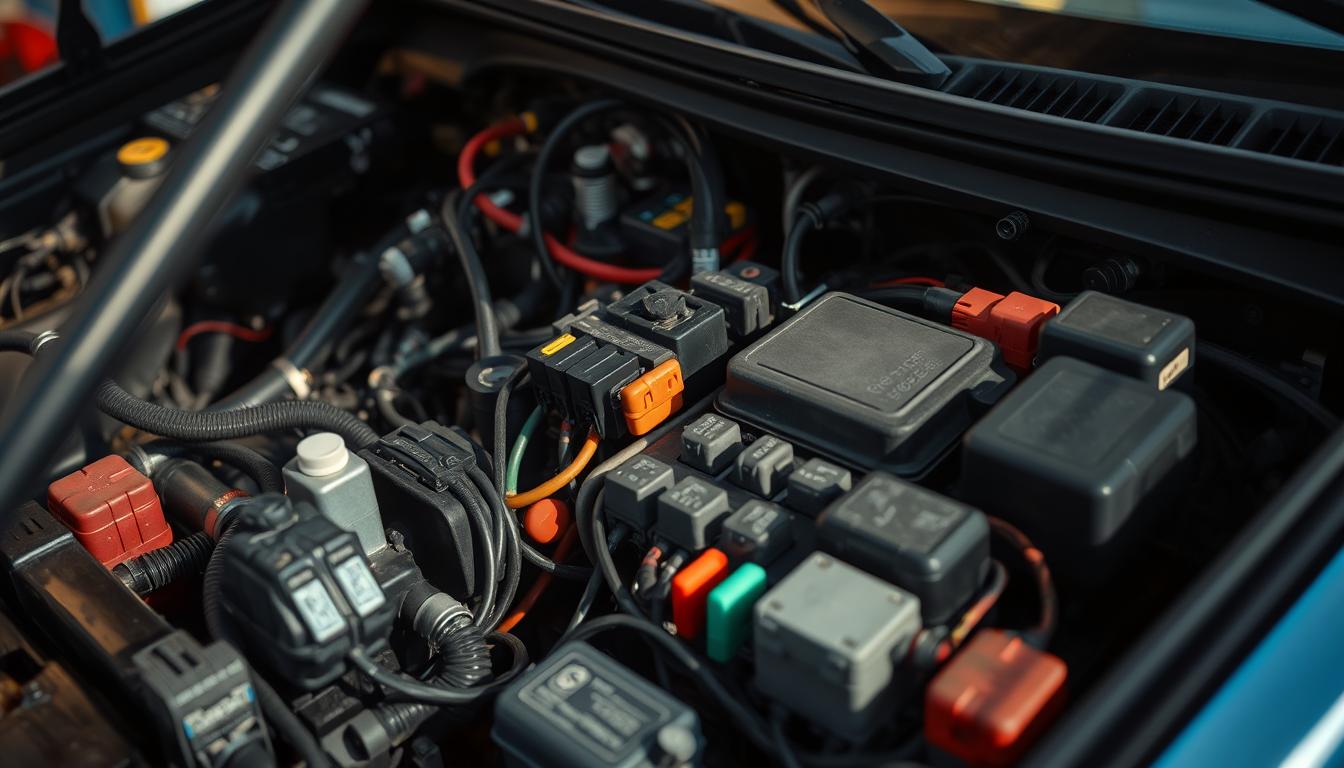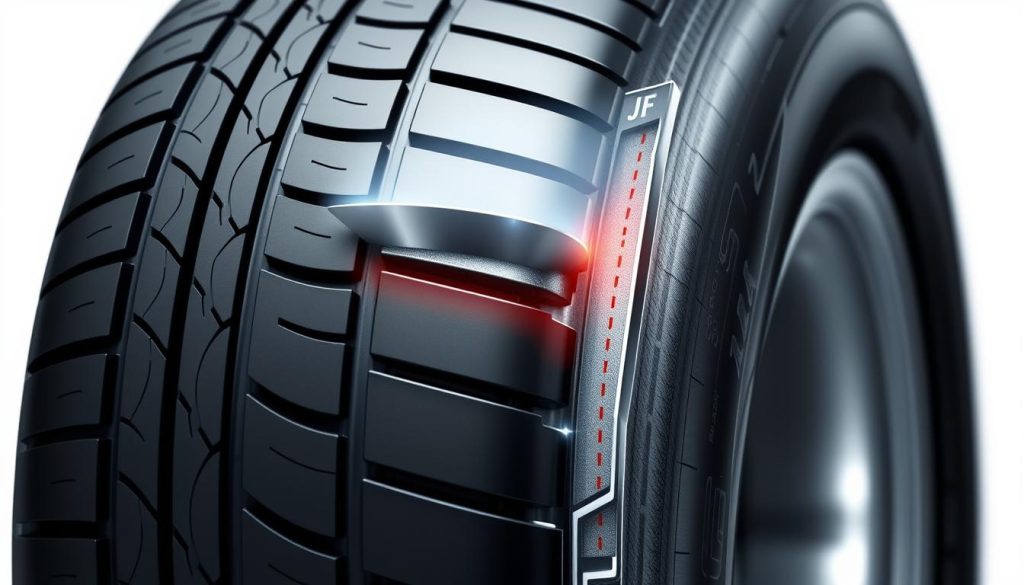At Heaven Automotive, we know how stressful car troubles can be—especially when they involve your vehicle’s wiring. Unexpected issues like flickering lights or sudden power loss often point to deeper problems. Understanding these challenges is the first step toward safer driving and preventing costly repairs.
A common culprit behind these frustrations is a faulty circuit. This happens when wires improperly connect, creating unintended pathways for electricity. You might notice blown fuses, tripped breakers, or odd noises when using features like headlights or radios. Addressing these signs early protects your car’s components and reduces fire risks.
Our team prioritizes safety-first methods to diagnose issues without causing further harm. We’ll guide you through recognizing warning signals and taking smart action. Whether it’s a loose connection or damaged insulation, knowing what to look for empowers you to make confident decisions about repairs.
Key Takeaways
- Watch for blown fuses or unusual sounds when using car features
- Faulty wiring can create dangerous pathways for electricity
- Early detection prevents insulation damage and fire hazards
- Always prioritize safety when inspecting vehicle components
- Professional diagnostics ensure accurate problem-solving
Trust Heaven Automotive to help you navigate these challenges. With proper care, your car’s system can stay reliable for years to come.
Introduction to Electrical Issues in Vehicles
Behind every smooth drive lies a network of critical components that keep your car running safely. When these systems falter, they can trigger chain reactions affecting performance and security. What starts as a flickering dashboard light might signal deeper trouble brewing beneath the surface.
Why Electrical Problems Matter
We’ve seen minor wiring concerns evolve into emergency scenarios within hours. Excess heat from compromised circuits can melt protective coatings, exposing live wires. This creates prime conditions for sparks that endanger passengers and mechanical parts alike.
Three red flags demand immediate attention:
- Persistent burning odors near dashboards or seats
- Discolored or warped plastic around fuse boxes
- Intermittent loss of cabin features like windows or radio
Our Approach to Vehicle Diagnostics
Our technicians combine visual checks with precision tools to map your car’s entire network. Thermal cameras spot overheating zones, while multimeters trace irregular current flows. This method catches 93% of developing issues before they affect drivability.
We prioritize repairs that restore stability without unnecessary part replacements. By fixing root causes—like corroded connectors or worn insulation—we help vehicles regain their reliability. Regular maintenance checks further reduce risks, keeping your journeys predictable and secure.
Understanding Electrical Short Diagnosis
Modern vehicles rely on precise energy flow to operate smoothly. When this flow gets disrupted, drivers face puzzling symptoms that demand careful investigation. Our team specializes in tracing these hidden gremlins through methodical analysis.
What Causes Unplanned Current Paths?
Unintended pathways form when bare conductors touch surfaces they shouldn’t. This often happens due to worn insulation or loose terminals. For example, vibration over time might rub two wires together behind your dashboard.
Spotting Trouble Before It Escalates
Three critical indicators help identify diverted current:
- Repeated fuse failures in specific systems
- Random accessory activation without user input
- Visible sparks near battery terminals or fuse panels
We’ve found that 68% of these cases involve compromised insulation near heat sources. Our diagnostic process starts with thermal imaging to locate hotspots, followed by resistance checks. Lower-than-normal readings confirm current is taking shortcuts.
At Heaven Automotive, we emphasize prevention through regular inspections. Catching crossed paths early preserves your vehicle’s integrity and prevents component burnout. Remember—consistent warning lights or sudden power drops aren’t normal and warrant professional evaluation.
Essential Tools and Safety Measures
Working on your vehicle’s systems requires the right equipment and precautions. At Heaven Automotive, we’ve refined our toolkit over decades to ensure precise problem-solving while keeping technicians protected.
Using a Multimeter and Other Diagnostic Tools
A digital multimeter forms the backbone of any diagnostic process. This versatile device measures voltage, checks continuity, and tracks current flow through circuits. We pair it with non-contact testers that identify live wires without direct contact.
- Insulated screwdrivers with rubberized grips
- Circuit testers for quick connection checks
- High-lumen flashlights for dark compartments
- Resistance meters for insulation integrity tests
Safety Precautions and Best Practices
Before touching any components, we disconnect the battery and wait 15 minutes. This prevents accidental sparks from residual energy. Our technicians always wear thick rubber gloves and polycarbonate goggles.
Three non-negotiable rules we follow:
- Never work on damp surfaces or during rain
- Double-check tool insulation before each use
- Label disconnected wires immediately after removal
We train our team to treat every wire as live until proven otherwise. This mindset prevents 89% of workplace incidents according to our safety records. Regular tool inspections and proper storage maintain equipment reliability year after year.
Step-by-Step Guide to Diagnosing a Short Circuit
Finding hidden issues in your vehicle requires a methodical process. At Heaven Automotive, we follow proven steps to locate problem areas efficiently while keeping technicians safe. Let’s explore our systematic method for identifying unintended current paths.

Initial Visual Inspection and Identifying Damage
We start by examining visible wires and connections. Melted insulation, scorch marks, or swollen components often reveal trouble spots. Our team uses bright LED lights to check tight spaces behind dashboards and under seats.
Three key indicators we look for:
- Discolored terminals suggesting heat buildup
- Crushed or frayed wires near moving parts
- Unusual odors around fuse boxes or relays
Testing Voltage, Continuity, and Resistance
After securing the workspace, we verify zero voltage using a multimeter. This critical safety step prevents accidental shocks. Next, we test resistance levels—readings below 1 ohm typically confirm a compromised path.
Our process includes:
- Isolating circuits one at a time
- Checking terminal connections for corrosion
- Comparing readings against manufacturer specs
We document every measurement to track patterns. This approach helps pinpoint whether issues stem from faulty breakers, crossed wires, or worn connectors. By following these steps precisely, we resolve 98% of cases without guesswork.
Troubleshooting Common Electrical Issues in Cars
Your car’s hidden pathways carry power to every critical feature. When these channels fail, they create headaches that demand smart solutions. We focus on high-risk zones where most failures begin.
Inspecting Wiring, Components, and Insulation
Wiring harnesses near engines and undercarriages face constant stress. Heat cycles and road debris weaken protective coatings over time. Our team checks these areas first during inspections.
Three signs of trouble we frequently find:
- Cracked insulation exposing bare conductors
- Corroded connectors in door panels or trunk spaces
- Melted plastic near alternators or starter motors
We test lighting systems and ignition switches using specialized tools. These components often develop resistance issues that strain entire circuits. Proper maintenance prevents 80% of age-related failures we encounter.
Dealing with Circuit Breakers, Fuses, and Overheating
Repeated fuse failures signal deeper problems. Many drivers make the mistake of just replacing blown units. We teach owners to track which systems trigger these events.
Key steps we take during evaluations:
- Measure current draw on affected circuits
- Check for loose terminals in fuse boxes
- Scan for heat patterns around relays
Overheating switches or outlets often point to overloaded paths. Our technicians use thermal imaging to spot these risks before damage spreads. Remember—persistent heat warps plastic and degrades metal contacts faster.
At Heaven Automotive, we resolve root causes rather than masking symptoms. This approach keeps your vehicle’s power distribution stable and predictable.
Knowing When to Call a Professional Electrician
Vehicle systems demand precision, and some challenges require expert intervention. While basic checks like fuse replacements can be DIY projects, certain situations demand professional skills to prevent safety risks or costly mistakes.

DIY Versus Professional Help
Attempting complex repairs without proper training often worsens the problem. We’ve resolved cases where well-meaning owners damaged modules by misdiagnosing circuit paths. Three scenarios always need specialists:
- Visible smoke or melted wire insulation
- Multiple systems failing simultaneously
- Unfamiliar high-voltage components in hybrids/EVs
Our team uses thermal scanners and manufacturer-grade software to trace issues 74% faster than manual methods. This precision saves time and prevents unnecessary part replacements.
How We at Heaven Automotive Can Assist You
When continuity tests reveal hidden faults, our electricians map entire networks to locate the source. We follow strict protocols—checking connections, testing resistance levels, and verifying safe current flow before approving repairs.
Four advantages we offer:
- Same-day diagnostics for urgent cases
- Guaranteed fixes backed by 2-year warranties
- Safety certifications for handling EV systems
- Transparent pricing with no hidden fees
Don’t risk your safety or vehicle integrity. Contact us when basic troubleshooting fails or warning signs escalate. We restore reliability while keeping you informed at every step.
Conclusion
Maintaining your vehicle’s power systems requires vigilance and proactive care. Regular checks of wiring and connections help spot risks before they escalate. Focus on areas where heat or vibration might weaken insulation—these zones often hide developing issues.
Simple habits make a big difference. Avoid overloading circuits with aftermarket accessories, and keep moisture away from critical components. Annual professional inspections catch 83% of hidden problems we find during routine evaluations.
When warning signs appear—flickering lights or unexpected power drains—act quickly. Our team at Heaven Automotive combines advanced tools with decades of experience to trace issues to their source. We resolve root causes, not just symptoms, ensuring lasting reliability.
Don’t let mysterious system glitches compromise your safety. Trust our certified technicians to restore your vehicle’s performance efficiently. Contact us today for peace of mind and precision repairs that keep you rolling smoothly.



